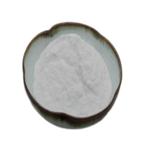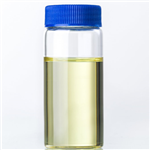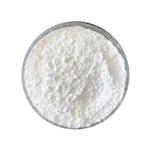- Sodium bisulfite
-

- $2321.00 / 1Tons
-
2024-04-26
- CAS:7631-90-5
- Min. Order: 1Tons
- Purity: 99.99%
- Supply Ability: 100Tons
- Sodium bisulfite
-

- $1.00 / 1g
-
2024-04-25
- CAS:7631-90-5
- Min. Order: 1g
- Purity: 99
- Supply Ability: 20tons
- Sodium bisulfite
-

- $0.00 / 1kg
-
2023-12-25
- CAS:7631-90-5
- Min. Order: 1kg
- Purity: 99%
- Supply Ability: 1000000
|
| | Sodium bisulfite Chemical Properties |
| Melting point | 150 °C | | density | 1.48 | | storage temp. | Store at RT. | | solubility | 300 g/L | | form | Powder/Solid | | Specific Gravity | 1.48 | | color | White | | Odor | Slight odor of sulfur dioxide | | Water Solubility | 300 g/L | | Merck | 13,8660 | | Stability: | Stable. Incompatible with strong oxidizing agents, strong acids. | | InChIKey | DWAQJAXMDSEUJJ-UHFFFAOYSA-M | | CAS DataBase Reference | 7631-90-5(CAS DataBase Reference) | | EPA Substance Registry System | Sodium bisulfite (7631-90-5) |
| | Sodium bisulfite Usage And Synthesis |
| Chemical properties | white monoclinic crystal; sulfur dioxide odor; soluble in water, slightly soluble in alcohol. | | Uses | 1. Used as reducing agent, food preservatives and bleach.
2. Used for the bleaching of cotton fabric and organic substance. Used as reducing agents in dyes, paper, leather, chemical synthesis and other industries. Used for the production of analgin and aminopyrine intermediates in pharmaceutical industry. Used as bleach, preservatives, and antioxidants of food grade products.
3. Sodium bisulfite is reduction bleach allowed to use in China. It has bleaching effect on food and has a strong inhibitory effect on the oxidase within plant foods. It can be used for candied fruit, glucose, sugar, rock candy, caramel, candy, liquid glucose, dried fruit, dried vegetables, vermicelli, bamboo shoots, mushrooms and mushroom cans in provisions of our country, with a maximum use of 0.45g/kg; it can also be used for potato starch with a maximum use amount of 0.2g/kg and a maximume residual amount (in terms of SO2) of less than 0.03 g/kg.
4. Used as reductants in analysis and also as bleach and bacterial inhibitors
5. Used as reducing agent, antiseptic, disinfectant and bleach. | | Identification test | Both sodium salt test (IT-28) and sulfite test (IT-30) are positive. | | Content Analysis | Transfer 50ml of 0.1mol/L iodine solution into a flask with a stopper, and then add 200mg of accurately weighed sample and plug. After placed 5min, add 1ml of hydrochloric acid, and plus starch test solution (TS-235) as an indicator. Titrate the excess iodine with 0.1 mol/L sodium thiosulfate. Each mI of 0.1mol/L iodine solution is equivalent to 3.203mg of sulfur dioxide (SO2). | | Toxicity | ADI 0~0.7mg/kg (in SO2; including SO2 and sulfites; FAO/WHO, 2001).
LD50 115 mg/k (rat, oral).
GRAS (FDA, § 182.3739, 2000). | | Usage limits | GB 2760-2001 (g/kg): candied fruit, dried fruits, dried vegetables, vermicelli, glucose, sugar, rock candy, caramel, candy, liquid glucose and cans of bamboo shoots, mushrooms and mushrooms 0.45; potato starch 0.20 (Residue≤0.03); fresh glucose (tablet gasification process, in sulfite) 2.4 (residual amount calculated in SO2≤0.05, tablet packaging shall give clear indication of indicate edible)
FAO/WHO(1984): frozen shrimp, prawns, lobsters (raw product) 100mg/kg, (cooked products) 30mg/kg(in SO2); frozen french fried potatoes 50mg/kg (in SO2); pineapple juice with anti-corrosion 500 mg/kg of (in SO2; only for manufacture).
Maximum residue levels (in SO2) of Japanese provisions: dried apricots, dried peaches 2g/kg; gelatin 0.5g/kg; molasses, corn syrup 0.3g/kg; fruit wine 0.35g/kg; shrimp 0.1mg/kg.
When applied to dry fruit, sodium bisulfite can be prepared into 0.2% to 3% solution to take dipping or spraying.
FDA, § 182.3739 (2000): shall not be used for meat, vitamin B and source food.
EEC (1990): mainly for the preservation of alcoholic beverages. | | Production method | Add sodium sulphite mother liquor (containing NaHSO3 40%, Ph value of 3 to 4) slowly into soda ash to generate sodium sulfite solution (to the slurry Ph value of 7~8 for the end); transfer the above sodium sulfite solution into series reactors (2 to 3) to absorb the SO2 gas (10% to 13%) from the combustion of sulfur, forming sodium bisulfite (to the reaction temperature no longer rising for the end). In the reaction process, a large number of crystals precipitate out, which is centrifuged to obtain the wet goods with moisture content of 6% to 10%, and then dehydrated by air drying at 250 to 300 ° C to make the final products.
2NaHSO3 + Na2CO3 → 2Na2SO3 + H2O + CO2↑
NaSO3+H2O→2NaHSO3
Absorb sulfur dioxide from the gas of sulfuric acid production with soda ash solution to generate sodium bisulfite. After further centrifugal separation and air drying at 250~300 ° C, the final sodium bisulfite is obtained.
Na2CO3 + 2SO2 + H2O → 2NaHSO3 + CO2↑ | | Hazards & Safety Information | Category: Corrosive items
Toxicity classification: moderate toxicity
Acute Toxicity: Oral-Rat LD50: 2000 mg/kg; Abdominal-Mouse LD50: 675 mg/kg
Flammable hazardous characteristics :
The products can decompose into sulfur oxides when meeting heat;
Aqueous solution is alkaline and corrosive.
Storage and transportation characteristics :
Storehouse should be low-temperature, well-ventilated and dry.
Fire extinguishing agent: much water
Occupational Standard: TWA 5mg /m3; TWA 5 mg/m3 | | Chemical Properties | white powder | | Chemical Properties | Sodium bisulfite is a white crystalline solid. Slight odor of sulfur dioxide and a disagreeable taste. Slowly oxidized to the sulfate on exposure to air | | Uses | Reducing agent; convenient source of sulfur dioxide. | | Uses | Sodium Bisulfite is a preservative that exists as a powder, with a
solubility of 1 g in 4 ml of water. it prevents discoloration and inhib-
its bacterial growth. it is used in dried fruit to inhibit browning and
maintain the bright color. it is found in reconstituted lemon juice.
see sulfur dioxide. | | Uses | sodium bisulfite is a preservative and anti-oxidant, it is most frequently used as a pH adjuster. | | Uses | As disinfectant and bleach, particularly for wool; in dyeing for preparing hot and cold indigo vats; in paper-making in place of sodium hyposulfite to remove Cl from bleached fibers; as stripper (reducer) in laundering; to remove permanganate stains from skin and clothing; to render certain dyes sol; manufacture of sodium hydrosulfite; coagulating rubber latex; as preservative for deteriorative liqs or solutions used for technical purposes; as antiseptic in fermentation industries. As preservative and bleach in food. Pharmaceutic aid (antioxidant). | | Definition | ChEBI: Sodium hydrogensulfite is an inorganic sodium salt having hydrogensulfite as the counterion. It has a role as a mutagen and an allergen. It is an inorganic sodium salt and a sulfite salt. It contains a hydrogensulfite. | | General Description | Also known as sodium acid sulfite or sodium hydrogen sulfite, NaHS03 is white crystals or crystalline powder that has a slight sulfurous odor and taste.Specific gravity 1.48. Strong irritant to skin and tissue. It is soluble in water,insoluble in alcohol,unstable in air,and non-combustible. Derived by saturating sodium carbonate solution with sulfur dioxide and the solution crystallized. Used as a chemical(sodium salts, cream of tartar), in vat dye preparation, textiles (antichlor, mordant, discharge), food preservative, bleaching groundwood, wool,etc., reducing agent, fermentation, antiseptic, cask sterilization (brewing), copper and brass plating,color preservative for pale crepe rubber, wood pulp digestion, analytical reagent,and as a dietary supplement. | | Air & Water Reactions | Water soluble. | | Reactivity Profile | Sodium bisulfite is a reducing agent. Emits highly toxic gaseous sulfur dioxide gas when heated to decomposition or on contact with mineral acids [Sax, 9th ed., 1996, p. 2949]. | | Hazard | Not permitted in meats and other sources
of vitamin B
1
, strong irritant to skin and tissue. | | Health Hazard | Powder is irritating to eyes, nose, and throat and can irritate skin. Ingestion may cause irritation of stomach. Very large doses cause violent colic, diarrhea, depression, and death. | | Fire Hazard | Flammable/combustible material. May ignite on contact with moist air or moisture. May burn rapidly with flare-burning effect. Some react vigorously or explosively on contact with water. Some may decompose explosively when heated or involved in a fire. May re-ignite after fire is extinguished. Runoff may create fire or explosion hazard. Containers may explode when heated. | | Contact allergens | Sodium bisulfite is mainly used as an antioxidant in pharmaceutical products, as a disinfectant or bleach, and in the dye industry. The bisulfite of commerce consists chiefly of metabisulfite and possesses the same properties as the true bisulfite. So, the allergen to be tested in products containing disulfite is the corresponding metabisulfite. | | Safety Profile | Poison by intravenous and intraperitoneal routes. Moderately toxic by ingestion. A corrosive irritant to skin, eyes, and mucous membranes. Mutation data reported. An allergen. When heated to decomposition it emits toxic fumes of SO, and Na2O. See also SULFUROUS ACID and SULFITES | | Potential Exposure | Sodium bisulfite is used in the digestion of wood pulp, in the tanning of leather; in the dyeing of textiles; as a photographic reducing agent; as a food preservative; as an additive in electroplating; as disinfectant, bleach, antioxidant, and as inhibitor of yeast and bacteria in winemaking. | | Shipping | UN2693 Bisulfites, inorganic, aqueous solutions, n.o.s., Hazard class: 8; Labels: 8-Corrosive material. UN3260 Bisulfites, inorganic, solid, n.o.s., Hazard class: 8; Labels: 8-Corrosive material. | | Purification Methods | Crystallise it from hot H2O (1mL/g). Dry it at 100o under vacuum for 4hours. | | Incompatibilities | Aqueous solution is a weak acid. Incompatible with strong mineral acids forming a toxic sulfur dioxide gas. A strong reducing agent, sodium bisulfite is incompatible with oxidizers, such as perchlorates, peroxides, permanganates, chlorates, and nitrates. Reacts with bases forming sulfate. Slowly oxidizes to sulfate in air. Heat causes decomposition. Slowly oxidized to the sulfate on exposure to air. Contact with oxidizers or acids forms sulfur dioxide gas. Attacks some metals in the presence of moisture. | | Waste Disposal | Dump into water, add soda ash, then neutralize with HCl; flush to sewer with large volumes of water. |
| | Sodium bisulfite Preparation Products And Raw materials |
|